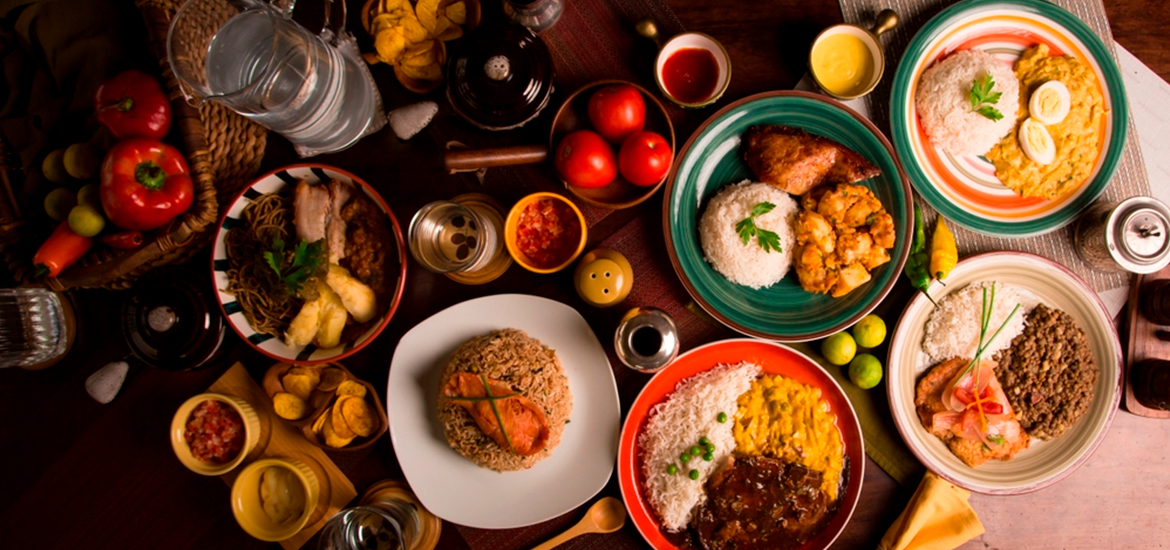Peru is a highly varied nation with a rich history dating back over 6000 years. Being a part of the birthplace of one of the greatest civilizations in history makes us Peruvians proud. Our cuisine shows our vast diversity and versatility. It represents our rich history, vibrant culture, and joy and passion.
In this blog, we’ll see why Peruvian food is so special, what makes it different from other cuisines worldwide, and what dishes you must try when coming to our country. Let’s do a mouthwatering tour of Peruvian food with Viagens Machu Picchu, we’re sure you’ll love our food as much as we Peruvians do!
What makes Peruvian food so special
Peruvian Territory is Huge
One of the many reasons to understand Peruvian food is the country’s geography. Peru’s territory is diverse. Its landscapes vary by region. For adventure and thrill-seekers, the jungle is a great option. The mysterious rainforest, the wonderful creatures, and the amazing attractions are some reasons. Many visitors come to our country looking for new experiences.

We have the coastal region too. This region is full of beautiful beaches and national parks. It also has former mysterious cities, such as Chan Chan, Nazca, and Caral. Many experts say it’s the best region for eating in the whole country. Then, we have the region best known to many. It’s where the most popular attraction in Peru is. We’re talking about the Andes Mountain region.
There, you’ll see breathtaking views, snow-capped mountains, and the cradle of the powerful Inca Empire, it has Cusco and Machu Picchu. There’s also the white city of Arequipa, surrounded by volcanoes. And there’s the highest navigable lake in the world, Titicaca.
Peru’s biodiverse
We have another reason too: The biological variety. Peru is lucky as it has 75% of the world’s ecosystems and over 50 types of corn. It also has about 25 types of pre-Hispanic peppers.
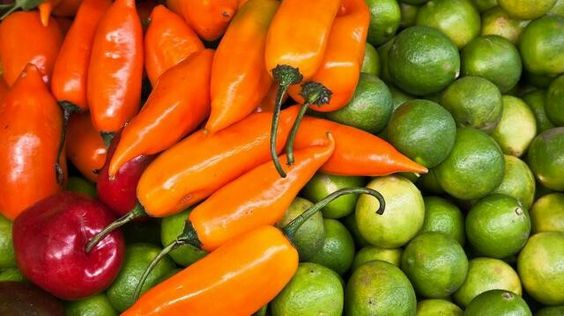
These include the 5,000+-year-old rocoto. Lastly, it has over 3500 varieties of potatoes. Recent studies show that people near Lake Titicaca produced the potato more than 8000 years ago.
Peru’s ethnically diverse
In addition to drawing its traditions, Peruvian cuisine also incorporated elements from other cultures. Peruvian cuisine has been greatly impacted by immigration from China, Japan, Africa, Spain, Italy, and even Arabs. This is evident in the variety of products, cooking methods, and signature meals that include flavors from other cultures.

Meats, fish, shellfish, pasta, flour, and spices from many places have all been combined to create a rich and varied cuisine. People worldwide know its unique flavors and wide range of textures.
“El Aderezo Peruano”
Each preparation has a distinct recipe. However, many of the dishes in our repertory share a similar ingredient: the so-called “aderezo peruano” (Peruvian dressing). Peruvian food is renowned for its distinctive flavors, which are made with a powerful and precise combination of flavors and ingredients. This blend is the cuisine’s distinguishing feature.

The Peruvian dressing is probably the most significant aspect of achieving traditional Peruvian food. What does that basis include? Onion, garlic, and chili are three modest elements that, when combined, originate the basic Peruvian dressing. Of course, there’s cumin and pepper, and depending on the dish spices, herbs, and veggies.
Our 10 picks to understand Peruvian food
Pollo a la brasa: Roasted Chicken is chicken marinated in soy sauce, garlic, salt, and Peruvian chili peppers. Another key factor is the hot coals. Pollo a la brasa always comes with french fries, salad, and sauces.
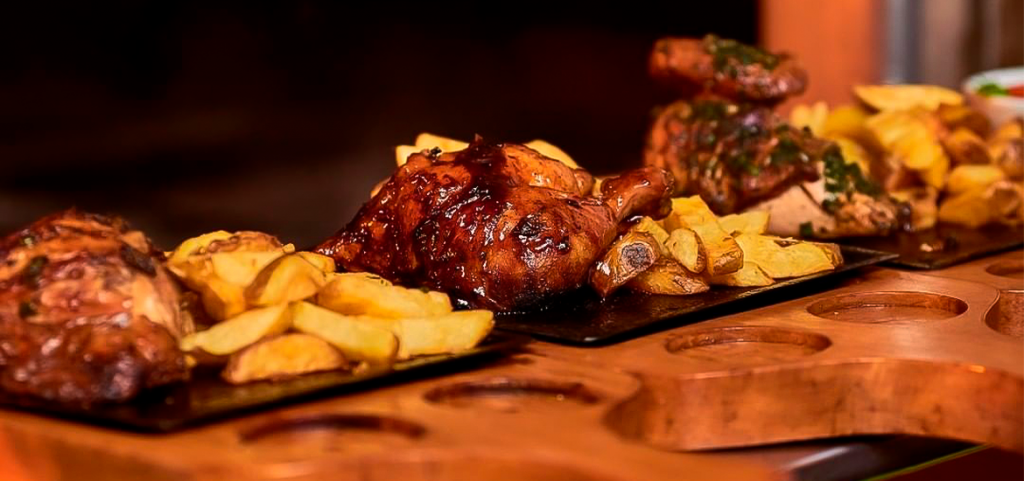
This dish is probably one of the most popular dishes in Peru, as there are over 13,500 “pollerias” (roasted chicken restaurants) across the country. And as if all of this wasn’t enough, we observe “Pollo a la brasa Day” every third Sunday in July, bit by bit.
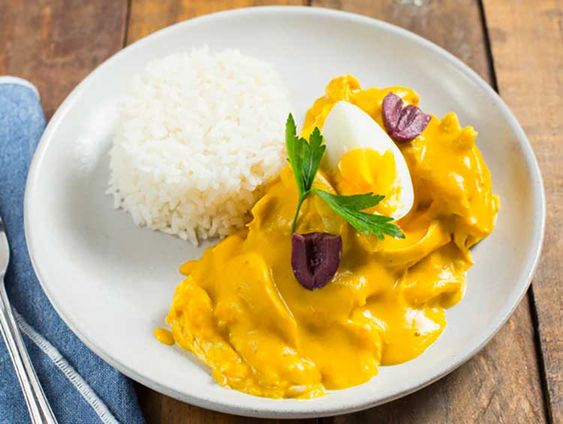
Aji de Gallina: Creamy chicken in English is a popular creole dish, a blend of bread, milk, onions, and Peruvian chili peppers. The result is a thick sauce mixed with shredded chicken, it’s accompanied by olives, slices of potatoes, and boiled eggs.
Lomo Saltado: Chinese immigrants brought Chinese-Peruvian hybrid cuisine to South America more than a century ago, resulting in Lomo Saltado, a stir-fried beef dish.
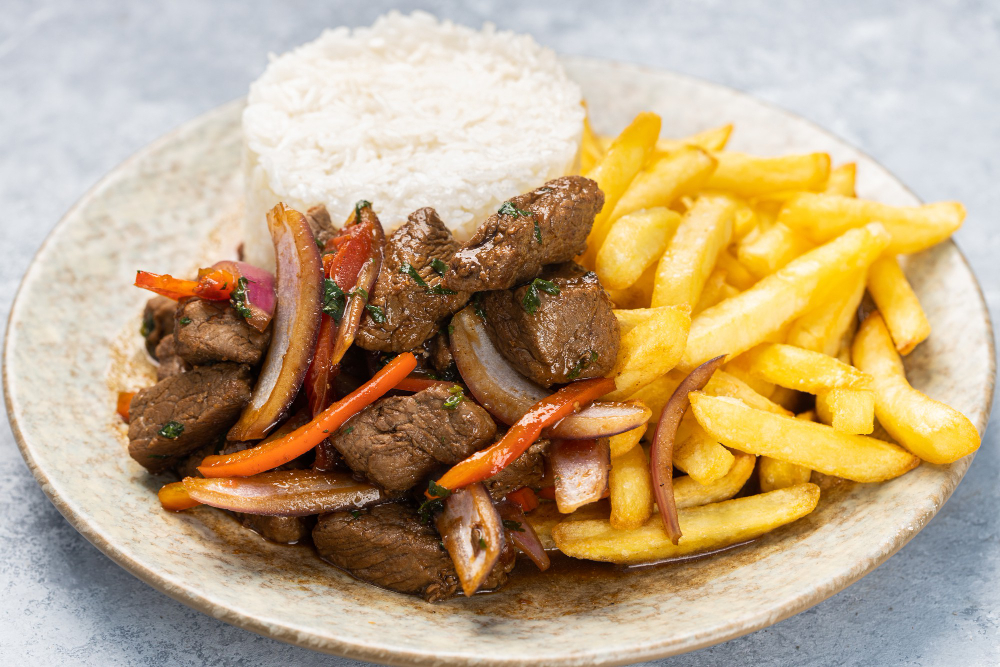
This dish consists of sliced beef, red onions, tomatoes, and yellow peppers. The secret is sauteing these ingredients with soy sauce. Lomo Saltado is accompanied by white rice; in some restaurants, you can find lomo saltado with fried eggs or plantain.
Anticucho: Anticucho’s main ingredient is cow’s heart (In English is grilled beef heart). Yes, you read it well, heart, but marinated in a special sauce finely grilled. Just like with potatoes, inserting different sauces on skewers enhances the flavor of the slices of meat.

We know that eating a cow’s heart doesn’t look delicious, however, many visitors tried the anticucho and now love it. These dish has an ancient history in the pre-Columbian era and is popular for being a delicious yet affordable street food.
Papas a la Huancaina: This side dish consists of boiling potatoes topped with a hot cheese sauce known as “huancaina sauce.” The main ingredients of the sauce are fresh cheese, garlic, aji amarillo (Peruvian yellow chili peppers), milk, and bread or saltine crackers for thickness.

The sauce is creamy, aromatic, and has a slightly spicy flavor, it is commonly accompanied by potatoes, boiled eggs, and lettuce
Arroz Chaufa is a fried rice dish that received Chinese influence and originated thanks to Chinese immigration to Peru at the end of the 19th century.
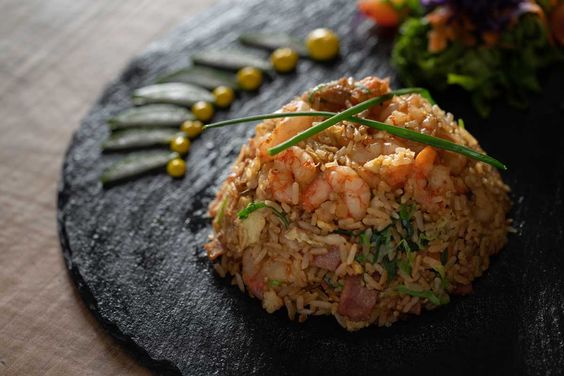
This dish consists of stir-fried with peas, scrambled eggs mixed with soy sauce, and chopped chicken. Some versions include adding meat, pork, shrimp, and peppers.
Cuy chactado This is a traditional Peruvian dish featuring fried guinea pigs. Guinea pig, or cuy as it’s known in Peru, has been a part of Andean cuisine for centuries.
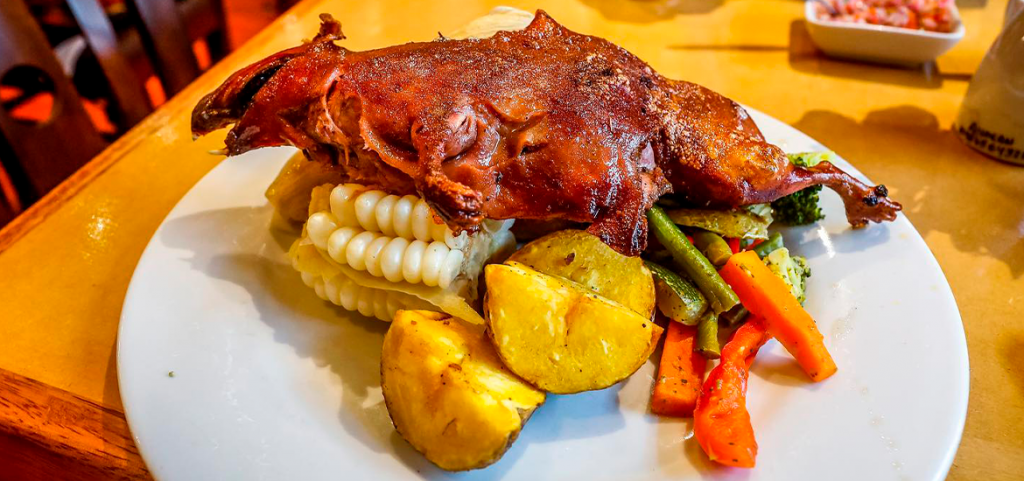
To prepare Cuy Chactado, flatten the guinea pig and then fry it until crispy, people typically serve it with potatoes. It is eaten with a spicy sauce, such as aji amarillo sauce or salsa criolla. Salsa criolla is a mix of onions, tomatoes, and lime juice.
Pachamanca is a traditional Peruvian cuisine from the Andes region. It is a ceremonial dish cooked for special occasions. Pachamanca involves preparing meat (usually hog, chicken, lamb, or guinea pig).
It also includes a range of Andean tubers like potatoes, sweet potatoes, and yuca. It also includes corn and fava beans. All of the ingredients are marinated in herbs and spices.
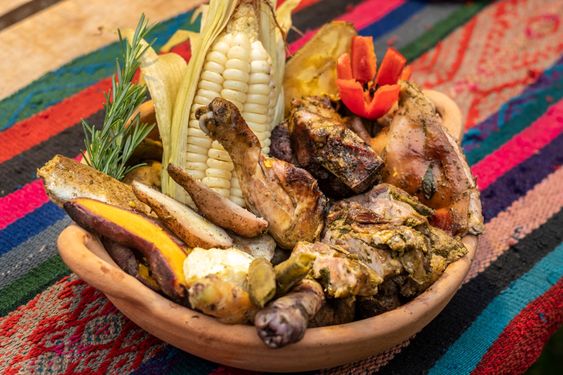
The materials are then placed into a pit lined with heated stones, wrapped in banana leaves, and cooked underground using traditional methods. The end product is a rich and aromatic meal with tender, juicy meats and vegetables.
“De la selva su Encanto” From the charming Peruvian rainforest, we have its most traditional dish, Juanes is traditional Peruvian rice and meat parcels wrapped in banana leaves. The dish is particularly popular in the Amazonian regions of Peru. To make juanes, rice is mixed with seasoned meat (often chicken), onions, garlic, and regional spices.
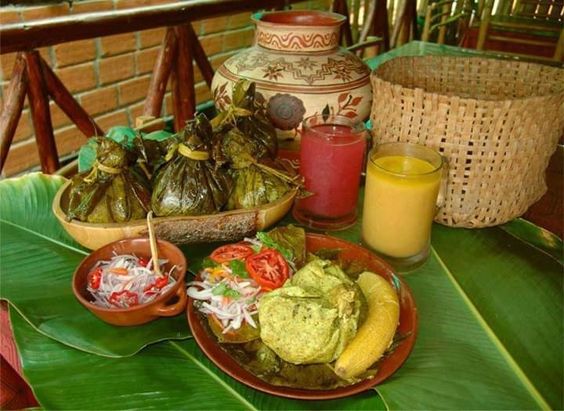
This mixture is then wrapped in banana leaves and steamed or boiled until the flavors meld together. People serve Juanes during festivals or special occasions. People enjoy them for their blend of flavors and the aroma of the banana leaves.
We have the best to the end. Marinate fresh fish in a lime-based concoction with onions, aji amarillo, and rocoto peppers to produce ceviche. Traditionally, the fish is marinated for a few hours, but some individuals have recently marinated it for only a few minutes to get a lighter, less chewy texture.

The acidity of the lime “cooks” the fish, producing a firm texture and citrus flavor. Add finely chopped red onions, cilantro, and aji amarillo (Peruvian yellow chili pepper) for a spicy kick. Finally, season to taste with salt and pepper. This dish includes sweet potato and maize (cancha) on the side for a truly Peruvian twist, and it is served cold.
What do you think now? Peruvian food is diverse, awesome, and above all delicious, isn’t it? For us Peruvians, our food is valuable and one of the reasons for our pride. We encourage you to try our meals if there’s a `Peruvian restaurant nearby your place.
Gaston Acurio, one of Peru’s most important chefs said the following about Peruvian food:
“There’s no Peruvian meal made without love”
Gaston Acurio
We, Peruvians totally agree with him. We encourage you to visit Peru and try the real Peruvian food with us!
Viagens Machu Picchu offers food tours and the chance to know our package destinations’ cultures, traditions, and techniques.
Viagens Machu Picchu, journeys that inspire, moments that last.

